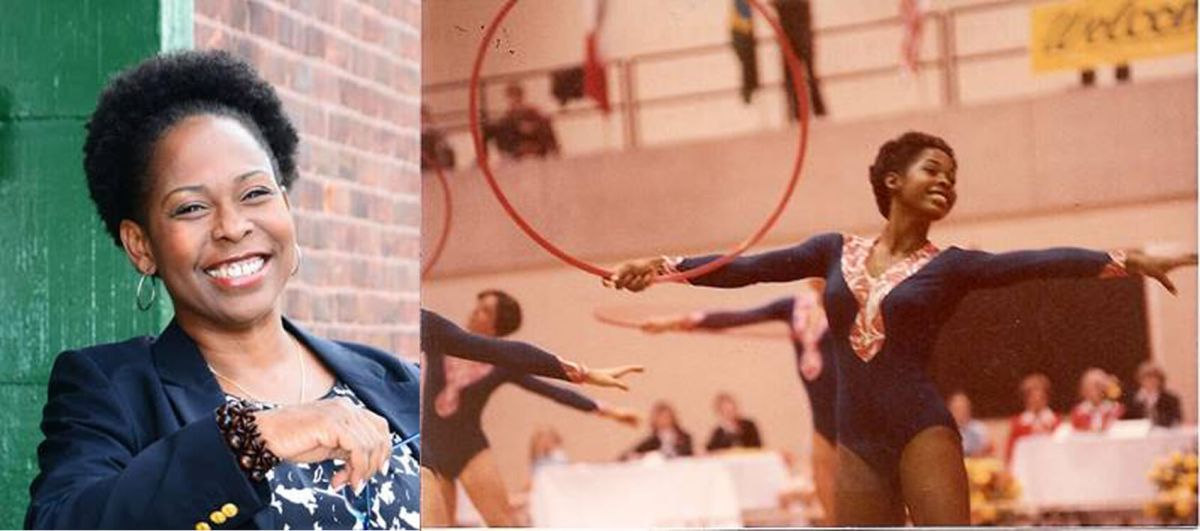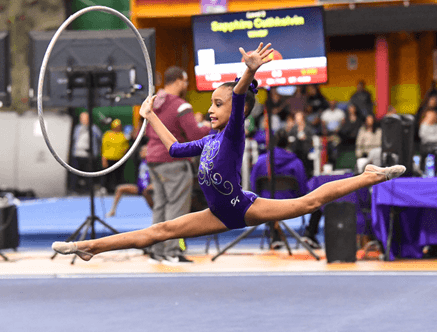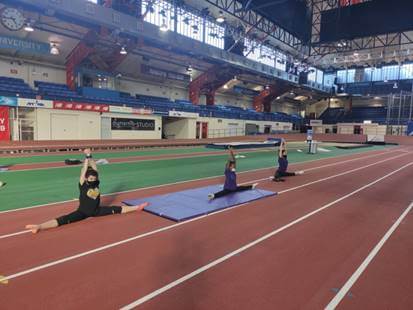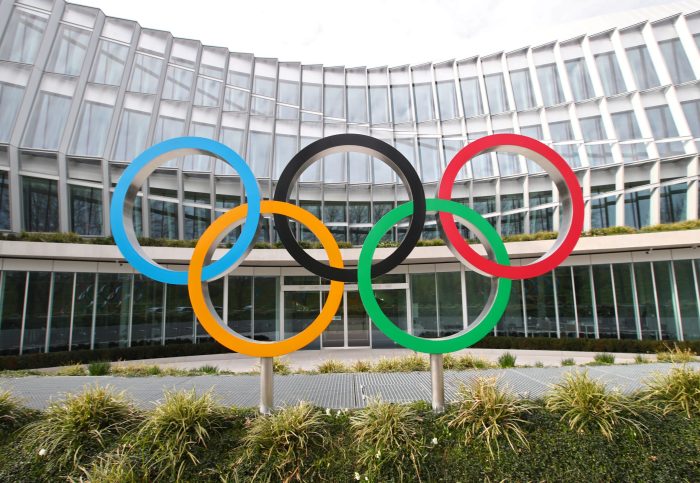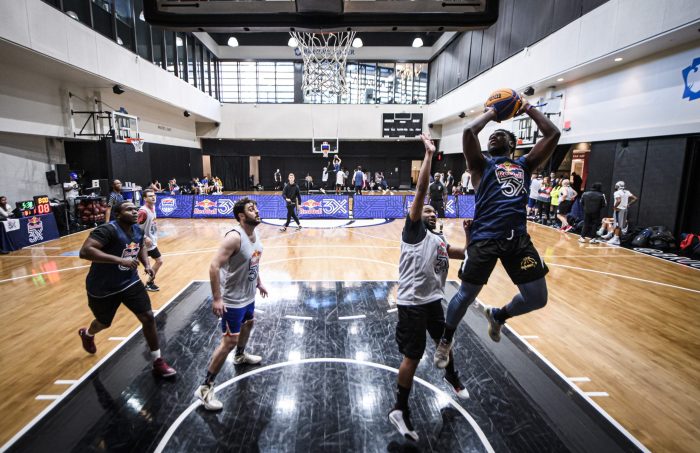Wendy Hilliard didn’t know that when she started rhythmic gymnastics as a child that she’d make history.
The Detroit native was originally a swimmer, a sport she started to follow in the footsteps of a friend. But after seeing gymnastics on TV, Hilliard became increasingly interested in the sport.
“We started looking for gymnastics, but we didn’t really have it in Detroit,” said Hilliard. “The YMCA had tumbling, so joined that team. But I had to go out to the suburbs because that’s where they had [gymnastics].”
Hilliard ended up falling in love with rhythmic gymnastics and was initially trained by coaches that were brought in from the then Soviet Union. After years of training, Hilliard became the first African-American woman to compete on the United States National Team, participating in three World Championships.”
“I got to travel all over the world with the team,” said Hilliard. “It was a really great experience, but I had my ups and downs along the way.”
In 1983 — the third World Championship that she was competing in — Hilliard was denied a spot on the World Championship Group Routine despite being one of the top athletes trying out. The coach said that she stood out too much for the synchronized routine.
“It was shocking. We were all top gymnasts, and I didn’t expect it,” said Hilliard. “I realized then that there are so many forces. It was weird with Black athletes and performers. I competed in Europe, but it was in the US where something was always a little off… I was always getting a hard time.”
Hilliard challenged the decision — a move that she admits is risky for any gymnast. U.S.A. Gymnastics then selected the team based on the ranking from the National Championships which allowed Wendy to join her third World Championship team.
“It sparked something in me. I had to fight – I was training 6 hours a day,” said Hilliard. “It’s always a gray area in gymnastics. It’s not usually a good idea to challenge judges, which makes it difficult. You have to weigh the choices of fighting for your right to compete. It’s not pretty but it’s worth it. You don’t have the right to take [competing] away from me because of my color. If you were a blond girl in Russia, you could do what you want, they had a boatload of them there. You can’t do that in the US.”
It was this experience that made Hilliard realize that she wanted to be an activist for the sport, particularly for other Black athletes.
“I set out on a path to be more of an advocate for the sport,” said Hilliard. “I moved to New York and I wanted to go back to grassroots — I wanted to provide more opportunities for people to do gymnastics.”
After her time competing, Hilliard continued her work in advocacy and served as the first African-American President of the Women’s Sports Foundation from 1995 to 1996. She also spent time as a performer on Broadway and was an Olympic sports commentator.
She later started the Wendy Hilliard Gymnastics Foundation (WHGF) in 1996. The foundation provides free and low-cost gymnastics classes to the Harlem community, expanding to Detroit in 2016. They offer classes at all levels, including classes for beginners and intermediate level gymnasts, preschool-aged children, and competition teams for older gymnasts that compete on local and national levels. In years past, the foundation also hosted a Harlem invitational that brought athletes from across the country for a few days of gymnastics
Because gymnastics can be an expensive sport, Hilliard wanted to have a space where kids can learn gymnastics that’s affordable.
“We teach high-level gymnastics that doesn’t cost a lot,” said Hilliard. “We have scholarships, everything is low-cost. We do a lot of free classes as well. The whole idea is that we have a good staff and raise money to do this because gymnastics is an expensive sport.”
Prior to the pandemic, WHGF was teaching their classes in the Armory. The classes have since shifted to virtual as a result of COVID-19, and even when they were able to hold outdoor classes, the foundation had to spread out in order to accommodate everyone.
“In late-summer we started going to other places because we lost access to the armory,” said Hilliard. “We’ve been renting space, working with other gyms, going out to New Jersey — it’s been the bane of my existence. The kids on our competition teams train 9-12 hours a week, I didn’t want them to lose out on their training. That’s been the hardest thing, we’ve had to spread out, but we’ve managed.”
Even in the midst of the pandemic, Hilliard is proud of the work that they have been able to do even while sheltering in place.
“What’s been good is that we kept the kids engaged and gave them levity, light and joy. It’s been very sweet,” said Hilliard. “For New York City public schools, we sent fitness videos to keep kids engaged. We’ve been able to share the gym virtually with more people.”
The foundation will celebrate its 25th anniversary this coming April. Hilliard says that it has been a blessing to have made it this far with the foundation and looks forward to what the future holds.
“We’re blessed, we survived the economic downturn of 2008 and we will make it through [the pandemic],” said Hilliard. “It’s been really gratifying that we provide this service to the community. For the kids, the coaches look like you, and that’s not commonly a part of gymnastics. We feel excited, and our goal this year is to start a legacy to be around for the next 25 years.”
In 2016, Hilliard launched her second foundation, Black Gymnasts in History, an online campaign to help pay tribute and bring visibility to other influential athletes who continue to inspire today’s generation. During Black History month that year, Hilliard was surprised to see that there were not a lot of resources chronicling Black gymnasts and their accomplishments. Hilliard worked with a friend of hers to help get the website going, and she was surprised to see what sort of information came to light.
“We would post every day during February about Black gymnasts, I knew most of them. Then we just started reaching out and asked, ‘can you send me a list of Blacks in gymnastics?'” said Hilliard. “I got back a list of people that I didn’t know. There was a gymnast, James Kanati Allen, who made the 1968 Olympic team. He told the press he was Native American. We found out nuggets of information and were able to put them all in one place.”
Every February, Black Gymnasts in History posts online each day on their website and social media highlighting a different Black gymnast. Now, the foundation has become a resource not just for those interested in the history of Black athletes, but for other outlets who are looking for information as well — Hilliard says they have been reached out to by outlets such as the BBC due to the rise of English gymnast Joe Fraser.
“It’s something that grew out of our efforts for our kids, and it turned out to be much more,” said Hilliard. “It’s getting stronger and getting out there.”
For more information about WHGF, visit wendyhilliard.org. For more information about Black Gymnasts in History, visit blackgymnastsinhistory.org.



